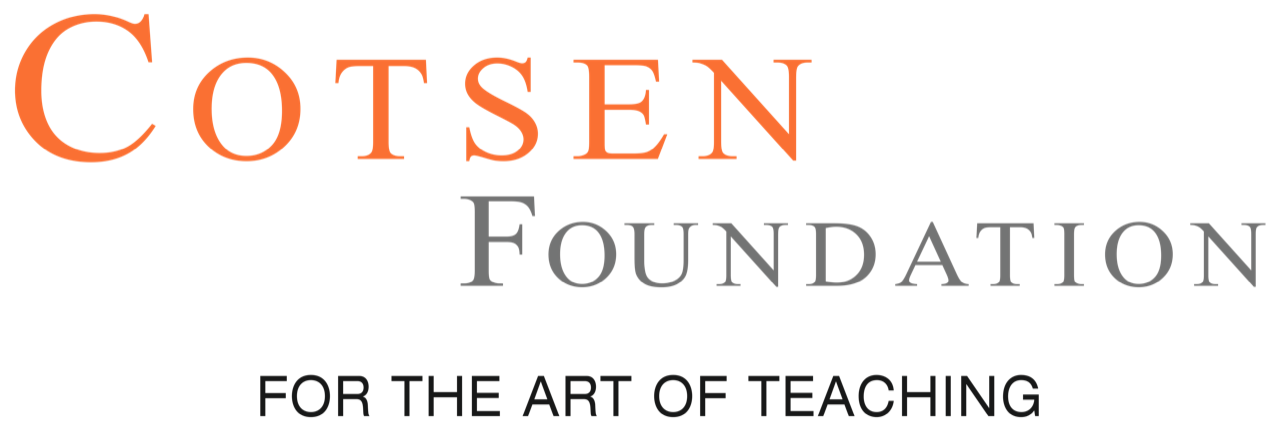Recommended Reading on Math
- Anderson. Classroom Discussions: Seeing Math Discourse in Action, Grades K-6, Math Solutions Publications, 2003. Includes 2 DVDs & CD.
- Ashlock. Error Patterns in Computation: Using Error Patterns to Help Each Student Learn, 10th Edition, Allyn & Bacon, 2010.
- Bamberger. Math Misconceptions: From Misunderstanding to Deep Understanding, Heinemann, 2010.
- Bay-Williams. Mathematics Coaching: Resources and Tools for Coaches and Leaders, K-12,
- Pearson Education, 2014.
- Blanton. Developing Essential Understanding of Algebraic Thinking, Grades 3-5, NCTM, 2011.
- Bloomer. Activity Math: Using Manipulatives in the Classroom, Addison-Wesley, 1993.
- Boaler. Mathematical Mindsets: Unleashing Students’ Potential Through Creative Math, Inspiring Messages, and Innovative Teaching, Jossey-Bass, 2016. (2 copies)
- Boaler. Mindset Mathematics: Visualizing and Investigating Big Ideas, Grade 4, Jossey-Bass, 2017.
- Boaler. Mindset Mathematics: Visualizing and Investigating Big Ideas, Grade 5, Jossey-Bass, 2018.
- Boaler. What’s Math Got to Do With It? How Teachers and Parents Can Help Children Learn to Love Their Least Favorite Subject, Penguin, 2008
- Boaler. What’s Math Got to Do With It? How Teachers and Parents Can Transform Mathematics Learning and Inspire Success, Penguin, 2015.
- Bressler. Minilessons for Math Practice, Grades 3-5, Math Solutions, 2006.
- Carpenter, et al. Children’s Mathematics: Cognitively Guided Instruction, Heinemann/NCTM, 1999. Includes 2 CDs. (2 copies)
- Carpenter, et al. Children’s Mathematics: Cognitively Guided Instruction, Second Edition, Heinemann, 2015. (15 copies)
- Carpenter. Children’s Mathematics, CGI: A Guide for Workshop Leaders (small workbook), Heinemann, 2000.
- Carpenter, et al. Thinking Mathematically: Integrating Arithmetic & Algebra in Elementary School, Heinemann, 2003. Includes CD. (3 copies)
- Carpenter, Franke, Johnson, Turrou & Wager. Young Children’s Mathematics, CGI in Early Childhood Education, Heinemann, 2017. (6 copies)
- Chapin. Classroom Discussions: Using Math Talk to Help Students Learn, Grades 1-6, Math Solutions Publications, 2003.
- Conklin. It Makes Sense! Using the Hundreds Chart to Build Number Sense, Grades K-2, Math Solutions Publications, 2012. (2 copies)
- Conklin. It Makes Sense! Using Ten Frames to Build Number Sense, Grades K-2, Math Solutions Publications, 2010.
- Danielson. Which One Doesn’t Belong: A Shapes Book, Stenhouse, 2016.
- Deal. Math Strands Fitness, 2nd Grade Practice: Exercises to Develop and Maintain a Strong Math Core, Stramds Fitness Publishing, 2013. (Written by Cotsen Alumnus)
- Empson. Extending Children’s Mathematics Fractions and Decimals: Innovations in Cognitively Guided Instruction, Heinemann, 2011. (2+ copies)
- Flynn. Beyond Answers: Exploring Mathematical Practices with Young Children, Stenhouse, 2017.
- Fosnot. Ages and Timelines Subtraction on the Open Number Line, Heinemann, 2007.
- Fosnot. Conferring with Young Mathematics at Work: Making Moments Matter, New
- Perspectives on Learning, LLC, 2016. (2 copies)
- Fosnot. Field Trips and Fund-Raisers: Introducing Fractions, Heinemann, 2007.
- Fosnot. Minilessons for Early Addition and Subtraction: A Yearlong Resource, Heinemann, 2007.
- Fosnot. Minilessons for Extending Addition and Subtraction: A Yearlong Resource, Heinemann, 2007.
- Fosnot. Minilessons for Early Multiplication and Division: A Yearlong Resource, Heinemann, 2007.
- Fosnot. Minilessons for Extending Multiplication and Division: A Yearlong Resource, Heinemann, 2007.
- Fosnot. Minilessons for Operations with Fractions, Decimals, and Percents: A Yearlong Resource, Heinemann, 2007.
- Fosnot. Organizing and Collecting The Number System, Heinemann, 2007.
- Fosnot. Overview: Investigating Fractions, Decimals, and Percent, Grades 4-6, Heinemann, 2007.
- Fosnot. Overview: Investigating Number Sense, Addition, and Subtraction, K-3, Heinemann, 2007.
- Fosnot & Dolk. Young Mathematics at Work: Constructing Multiplication and Division, Heinemann, 2001.
- Fosnot & Jacob. Young Mathematics at Work: Constructing Algebra, Heinemann, 2010.
- Fosnot & Dolk. Young Mathematics at Work: Constructing Fractions, Decimals, and Percents, Heinemann, 2002.
- Fosnot & Dolk. Young Mathematicians at Work: Constructing Number Sense, Addition, and Subtraction, Heinemann, 2001.
- Gojak. The Common Core Mathematics Companion: The Standards Decoded, Grades K-2, Corwin and NCTM, 2017.
- Gojak. The Common Core Mathematics Companion: The Standards Decoded, Grades 3-5, Corwin and NCTM, 2017.
- Hattie. Visible Learning for Mathematics: What Works Best to Optimize Student Learning, Grades K-12, Corwin, 2017. (3 copies)
- Hiebert, et. al. Making Sense: Teaching and Learning Mathematics with Understanding, Heinemann, 1997. (3 copies)
- Humphreys. Making Number Talks Matter: Developing Mathematical Practices and Deepening Understandin, Grades 4-10, Stenhouse, 2015.
- Hyde. Comprehending Math: Adapting Reading Strategies to Teach Mathematics, K-6, Heinemann, 2006.
- Hyde. Comprehending Problem Solving: Building Mathematical Understanding with Cogntion and Language, Heinemann, 2015.
- Hyde. Mathwise: Teaching Mathematical Thinking and Problem Solving, Heinemann, 1991.
- Japan’s Elementary Math Text Books, Grades 1-6, in English. Study with Your Friends Mathematics for Elementary Schools.
- Japan Society of Mathematical Education. Mathematics Program in Japan: Elementary, Lower, Secondary & Upper Secondary Schools. August 2000. (Japanese standards).
- Kaput. Algebra in the Early Grades, Taylor & Francis Group, NCTM, 2008.
- Kazemi. Intentional Talk: How to Structure and Lead Productive Math Discussions, Stenhouse, 2014. (5 copies)
- Kelemanik. Routines for Reasoning: Fostering the Mathematical Practices in All Students, Heinemann, 2016.
- Kilpatrick, ed. (Mathematics Learning Study Committee). Adding It Up: Helping Children Learn Mathematics. National Academy Press, 2001.
- Kilpatrick, ed. (Mathematics Learning Study Committee). Helping Children Learn Mathematics. National Academy Press, 2002.
- Lamon. Teaching Fractions and Ratios for Understanding: Essential Content Knowledge and Instructional Strategies for Teachers, Routledge, 2012.
- Leinward. Accessible Mathematics: 10 Instructional Shifts That Raise Student Achievement, Heinemann, 2009. (2 copies)
- Lockhart. A Mathematician’s Lament: How Schools Cheat Us Out of Our Most Fascinating and Imaginative Art Form, Bellevue Literary Press, 2009.
- Ma. Knowing and Teaching Elementary Mathematics: Teachers’ Understanding of Fundamental Mathematics in China and the United States (Studies in Mathematical Thinking and Learning Series), Routledge, 2010.
- McCoy. High-Yield Routines, Grades K-8, NCTM, 2013.
- Mendieta. Pictoral Mathematics: Am Engaging Visual Approach to the Teaching and Leaning of Mathematics, Meaningful Learning, 2005.
- Milken Family Foundation. The Monstrously Fun Fraction Book: Grades 3-6, Milken Family Foundation, 2003.
- Murray. The Differentiated Math Classroom: A Guide for Teachers, K-8, Heinemann, 2007.
- NCTE. Principles to Action: Ensuring Mathematics Success to All, NCTM, 2014. (2 copies)
- Noah. Mike’s Math Club Presents: The Monstrously Fun Fraction Book, Grades 3-6, Milken Family Foundation, 2003.
- O’Connell. Now I Get It: Strategies for Building Confident and Competent Mathematicians, K-6, Heinemann, 2005 (includes CD-ROM)
- Parrish. Number Talks: Helping Children Build Mental Math and Computation Strategies, Grades K-5, Math Solutions, 2011. (includes DVD). (4 copies)
- Parrish. Number Talks: Fractions, Decimals, and Percentages, Math Solutions, 2016. (2 copies)
- Ray. Powerful Problem Solving: Activities for Sense Making with the Mathematical Practices, Heinemann, 2013.
- Richardson. Developing Number Concepts Using Unifix Cubes, Addison-Wesley, 1984.
- Richardson. How Children Learn Number Concepts: A Guide to the Critical Learning Phases, Math Perspectives Teacher Development Center, 2012.
- Russell, et al. But Why Does It Work? Mathematical Argument in the Elementary Classroom, Heinemann, 2017. (2 copies)
- Schuster & Anderson. Good Questions for Math Teaching: Why Ask Them and What to Ask: Grades 5-8, Math Solutions Publications, 2005. (2 copies)
- Shumway. Number Sense Routines: Building Numerical Literacy Every Day in Grades K-3, Stenhouse Publishers, 2011. (2 copies)
- Small. Good Questions: Great Ways to Differentiate Mathematics Instruction, 2nd Edition, Teachers College, 2012.
- Smith. Five Practices for Orchestrating Productive Math Discussions, NCTM, 2011.
- Sullivan. Good Questions for Math Teaching: Why Ask Them and What to Ask: K-6, Math Solutions Publications, 2002. (2 copies)
- Van De Walle. Elementary and Middle School Mathematics, Sixth Ed., Pearson, 2007.
- Van De Walle. Elementary and Middle School Mathematics, Eighth Ed., Pearson, 2013.
- Van De Walle. Teaching Student-Centered Mathematics Volume One: Grades K-3, Pearson, 2006.
- (2 copies)
- Van De Walle. Teaching Student-Centered Mathematics Volume Two: Grades 3-5, Pearson, 2006.
- (2 copies)
- Van De Walle. Teaching Student-Centered Mathematics Volume Three: Grades 5-8, Pearson, 2006.
- Van De Walle. Teaching Student-Centered Mathematics, Second Edition, Volume I: Grades PreK-2, Pearson, 2014. (2 copies)
- Van De Walle. Teaching Student-Centered Mathematics, Second Edition, Volume II: Grades 3-5, Pearson, 2014. (3 copies)
- Van De Walle. Teaching Student-Centered Mathematics, Second Edition, Volume III: Grades 6-8, Pearson, 2014.
- Wedekind. Math Exchanges: Guiding Young Mathematicians in Small-Group Meetings, Stenhouse, 2011.
- Zager. Becoming the Math Teacher You Wish You’d Had: Ideas and Strategies from Vibrant Classrooms, Stenhouse, 2017. (2 copies)

